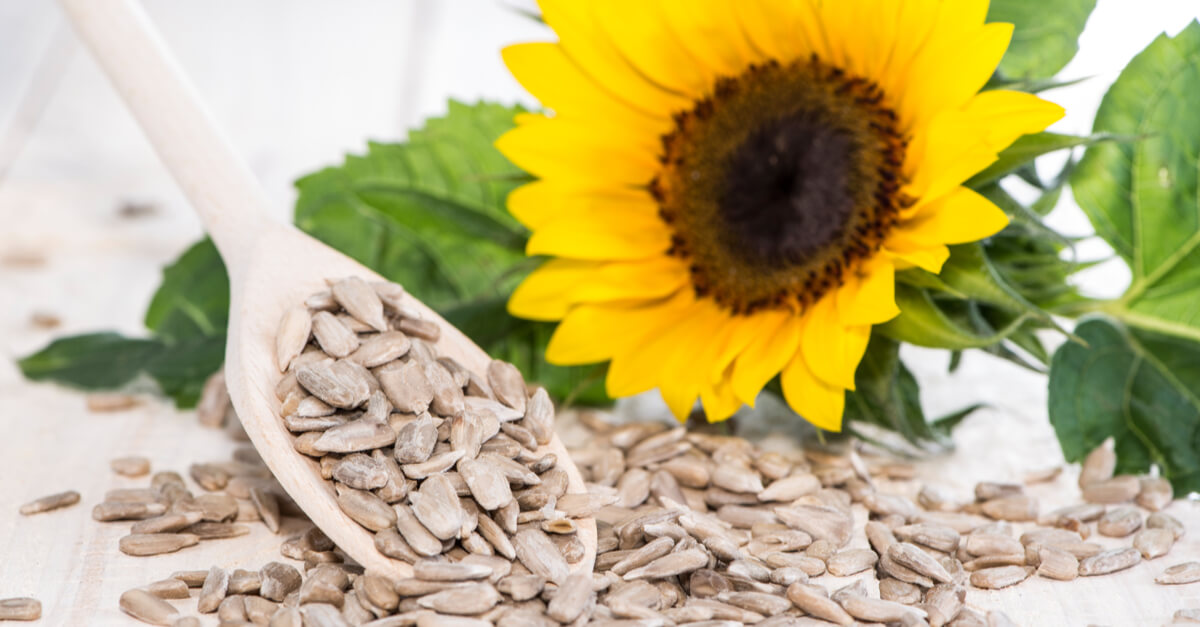The Struggle:
Lecithin is one of the most well known emulsifiers. It occurs naturally in many foods, From eggs to soy. Lecithin aids dressing and mayonnaise by creating a bond between the fats and water. With traditional egg based mayonnaise the lecithin is naturally present in the eggs, in plant-based mayonnaise a lecithin would need to be added. A big selling point of lecithin is that it wears many hats. The emulsification properties we talked about before can be expanded upon. All the baked goods you can think of can benefit from lecithin. Lecithin holds the water and fats together to slow the staling process. Lecithin can also create culinary foams that you can use to add intrigue and flair to any dish. The most common powdered lecithin is soy based. More recently there has been an increased interest in sunflower lecithin. This begs the questions, how are they different? If they are both plant based why should one be used over the other?
“What are the benefits of sunflower lecithin?”
Not a Lesser Lecithin
Sunflower lecithin and soy lecithin are similar in that they can do all of the same things. Want a loaf of bread or a cinnamon bun to stay fresher for longer? Soy and sunflower lecithin both work here. The same can be said for emulsions and foams. Both sunflower and soy will work.
So what’s the catch, how are they different? Alright I’ll get the easy one out of the way first, there is an aversion to soy. Soy is a common allergen and anytime you include it in a recipe it can shut out a portion of your audience from being able to enjoy it. The second issue with soy lecithin is it is so Hydrophilic (water loving) That it has a tendency to clump straight out of the package. Soy lecithin will snatch humidity out of the air and hold on for dear life. Once the soy lecithin begins to gobble up that moisture it will begin to clump. If too much moisture is gathered by the soy lecithin the result you end up with is no longer a soy lecithin powder, but more like a soy lecithin pattie. This makes the soy lecithin more difficult to use as the clumps will need to be broken up into a recipe. If the clumps are not evenly distributed you won’t get the full benefits of the lecithin. Sunflower lecithin while still performing all the same tasks as its soy cousin, does not clump. With that being said if any ingredient is left in an area with 90% humidity it will eventually pick up moisture. So it is always smart to store these ingredients properly.
Lastly, sunflower lecithin can replace soy lecithin 1:1 in any recipe. This makes it easy so you dont have to reformulate a new recipe to accommodate the change. With all this in mind Sunflower lecithin is easy to work with, has less of an allergy risk, and most of all is easy to store. So try it in your recipes or in one of ours. We had great results with it in our Autumn Apple Cider Cinnamon Rolls recipe. A bite of this pillowy, toothsome cinnamon roll will transport your palate to fall in New England. They’re soft, they’re light, they’re a perfect sweet delight.



12 Comments.
I’m a bit confused about less than could I add it in my cakes and what is the percentages should I use thanks so much.
Yes you can add it into cakes – try starting at 1% by weight of your ingredients and you can always adjust up or down from there.
How much liquid sunflower lecithin should I use to make mayonnaise?
start at around 1% by weight.
I’m wondering if I can use powdered sunflower lecithin to make a salad dressing of ranch-dressing consistency using just cashew milk, vinegar, mustard, and seasonings? If so, how much lecithin would be needed for a mix of approx. 250 gm milk-100 gm vinegar-50 gm mustard?
Sunflower lecithin powder would work great as an emulsifier in this application, but it may not reach your desired viscosity on it’s own.
My herb garden is going crazy this year and I would like to make herb infused butters and oils and possibly honey. I order to keep them from separating I understand sunflower lecithin powder is the best emulsifier, but I can’t find any references that explain what percentage or ratio I should use. Can you guide me?
Thanks
Try starting at 1% by weight of all of your ingredients.
Can you help me with a recipe for mayonnaise? I figured that egg yolk is just lecithin and water and I could use my sunflower lecithin instead by mixing it with the lemon juice and vinegar first, then mustard and drizzle the oil. What amounts of each will work for this?
To make this specific recipe would require lots of testing on our end to make it work correctly with the product. What you are saying for method sounds correct, and may only require fine tuning to make sure it works properly.
Thank you. Now–I only need to know about how much s/f lecithin is equivalent to one egg yolk.
Thank you. Now–I only need to know about how much s/f lecithin is equivalent to an egg yolk.